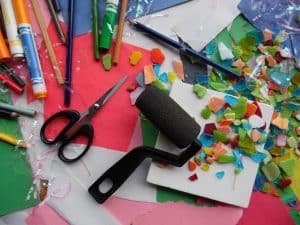Learner-Centered Tip of the Week: Including Multiple Readiness Levels
CompetencyWorks Blog
 This post originally appeared on Courtney Belolan’s website on April 28, 2017. Belolan is the instructional coach for RSU2 in Maine.
This post originally appeared on Courtney Belolan’s website on April 28, 2017. Belolan is the instructional coach for RSU2 in Maine.
As we enter into the last few months of the school year, many of us are starting to turn an eye towards next year. It is a great time to think about the learning experiences we’ve put together for our learners, and how to grow them to be even more learner centered. One place to go is thinking about expanding learning opportunities to include targets at multiple readiness levels rather than only centering on one or two. We can describe this as having multiple access points. Some contents and measurement topics lend themselves more easily to this flexibility, while others take a little more thinking.
Last year I wrote two posts that can be helpful to review:
3/10/16 Increasing Engagement: Connecting Learning Targets
4/12/16 Thinking in Measurement Topics, Not Targets
Expanding our unit, or project, or applied learning, plans to include a range of access points allows for a more diverse and rich learning environment. When learners at different readiness levels have the opportunity to interact with one another in meaningful ways some wonderful things happen. Learners get to hear, see, and think about different ideas and strategies they may not have thought of or tried before. The culture becomes much more inclusive and learners practice essential collaboration skills. Learning pathways are opened up, and much more flexible, allowing learners to move through the targets more freely. So how could this look?One way to go about planning to include a variety of readiness levels is to begin with one target, then spread up and down the measurement topic. Here are two examples, one in reading and one in visual art. I’ll use the color metaphor from the Connecting Learning Targets post to support a visual representation, and call these targets “target b.”
B. Is skilled at critiquing multiple arguments on the same topic
B. Understands different ways art is used to represent, establish, reinforce, and reflect group identity
The next step is to think about the targets that come before and after these targets. Now there are targets A, B, and C.
Reading:
- Understands the difference between sound/unsound reasoning and relevant/irrelevant evidence used to support an argument.
- Is skilled at critiquing multiple arguments on the same topic
- Understands why an author may present one or more points of view or lines of reasoning for a specific audience and purpose
Art:
- Understands that response to art is influenced by the time and place in which it was created, the available resources, as well as the cultural uses.
- Understands different ways art is used to represent, establish, reinforce, and reflect group identity
- Understands how the knowledge of culture, traditions, and history may influence personal responses to art.
In the reading example, all of these targets could be studied together within a larger unit, project, or applied learning opportunity about argument. While it is clear that learners need to be successful with targets A and B before they move on to C, it is also easy to think about how all of these targets could be a part of a single experience, with learners working on different targets. Maybe the whole group is exploring argument in political speeches. Maybe the whole group is working on argument through a public awareness campaign with the local land trust. It is the same with the art targets. Maybe the class is learning about graffiti in urban areas. Maybe the class is helping a local museum work on the problem of attracting visitors.
Surely, there are different planning considerations on the part of the teacher. Because the learning experience is now a little more personalized, the design of the learning input and processing needs to be more flexible. This is where other learner-centered practices come into play. One essential piece of processing that teachers will need to pay special attention to is how to allow for the learners at different targets to collaborate and interact with each other. There are a variety of reflection and discussion methods and activities that could be used to accomplish this.
See also:
- Learner-Centered Tip of the Week: Exceeding is More Work
- Learner-Centered Tip of the Week: Grouping is a Strategy, Not the Goal
- Learner-Centered Tip of the Week: Supporting Learners with Common Language
Courtney Belolan works at RSU 2 in Maine where she supports K-12 teachers with performance-based, individualized learning. Courtney works closely with teams and teachers as a coach, and with the school and district leadership teams as an instructional strategist. Courtney has worked as a 6-12 literacy and instructional coach, a middle level ELA teacher, an environmental educator, and a digital literacy coach. Her core beliefs include the idea that the best education is one centered on student passions and rooted in interdisciplinary applications, and that enjoying learning is just as important as the learning itself.